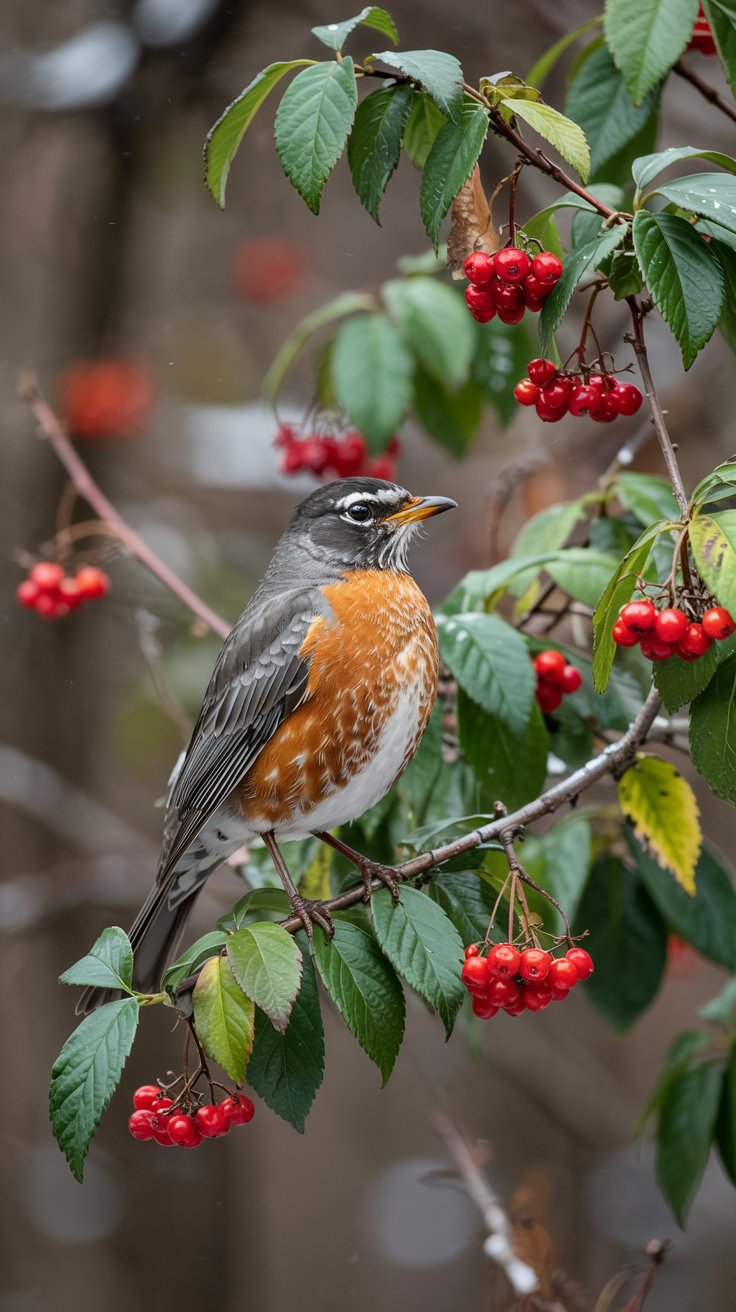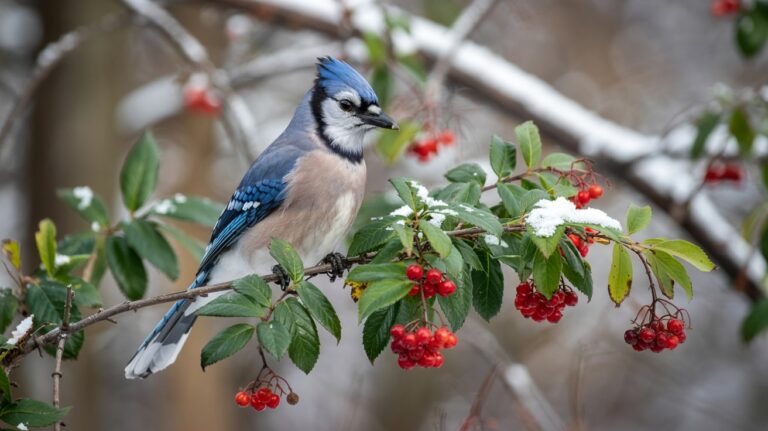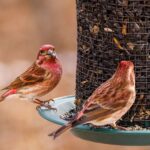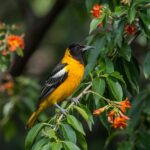Winterberry holly stands out as a delicious treat in the winter landscape. Its bright red berries persist through the coldest months, offering vital nutrition when birds need it most.
Did you know that Winterberry holly is one of the best plants you can add to your garden to support winter birds? Each bush is capable of producing thousands of berries that remain available throughout the harshest weather.
What Is Winterberry?
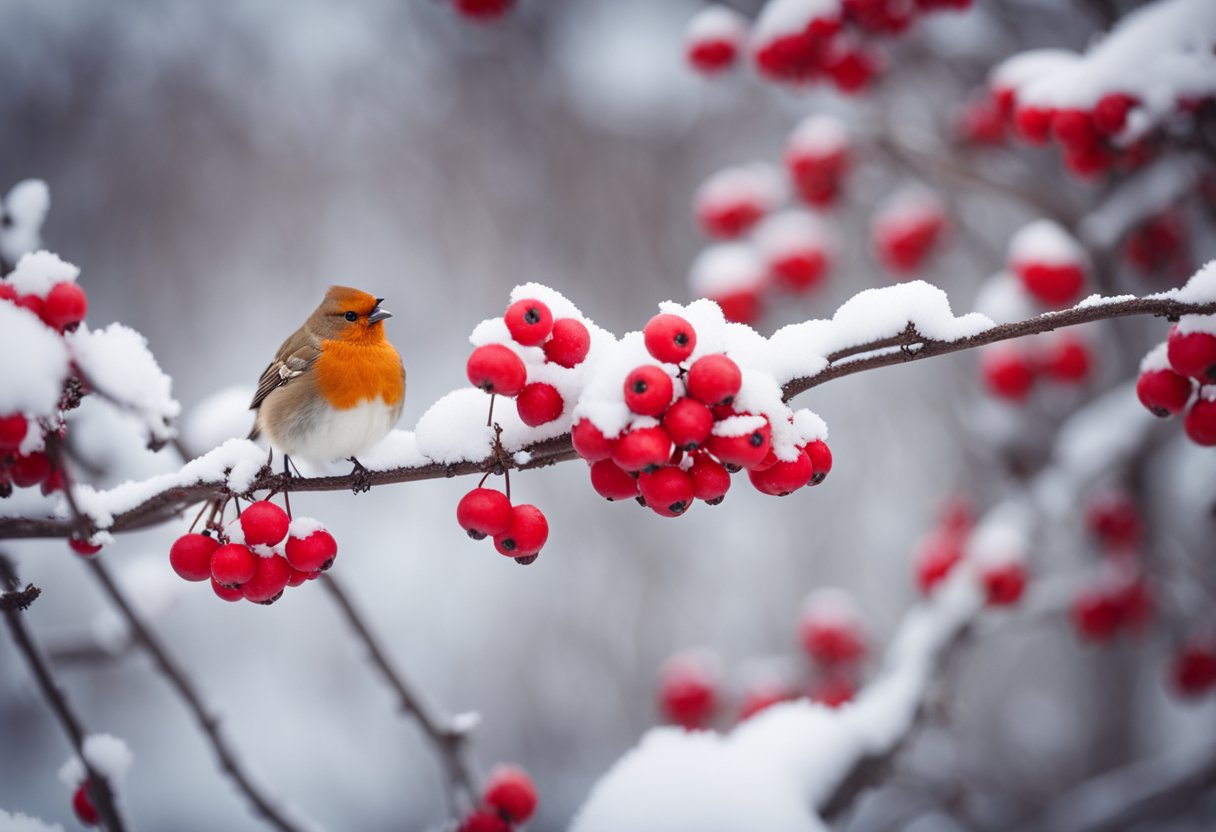
Winterberry (Ilex verticillata) belongs to the holly family but drops its leaves in fall, unlike its evergreen cousins. This native North American shrub can grow 6-10 feet tall and spread just as wide.
Unlike American holly, winterberry has smooth-edged leaves rather than spiny ones.
The most striking feature is its abundant bright red berries that persist through winter. These berries develop only on female plants, so you’ll need at least one male plant nearby for pollination. According to Johnson’s Nursery, one male can pollinate up to ten females if planted within 50 feet.
Winterberry’s clusters of small white flowers appear in late spring but aren’t particularly showy. The plant’s real star power comes in winter when its branches are laden with vivid berries.
Birds That Love Winterberry
What Birds Are Attracted To Winterberry Bushes?
Robins are among the most common visitors to winterberry bushes. You’ll often see them gathering in flocks to feast on the bright red berries.
Cedar waxwings are particularly fond of winterberry fruits too. These elegant birds can strip a bush clean in just a few hours!
Blue jays, with their bold personalities, will happily include winterberry in their winter diet. You might notice them taking several berries at once back to their cache sites.
Mockingbirds and sapsuckers also enjoy winterberry fruits. Even mourning doves, typically seed eaters, will occasionally peck at fallen berries beneath the bushes.
The bright color of winterberries helps birds find food when snow covers other food sources. This makes your winterberry bushes a lively feeding station during winter months.
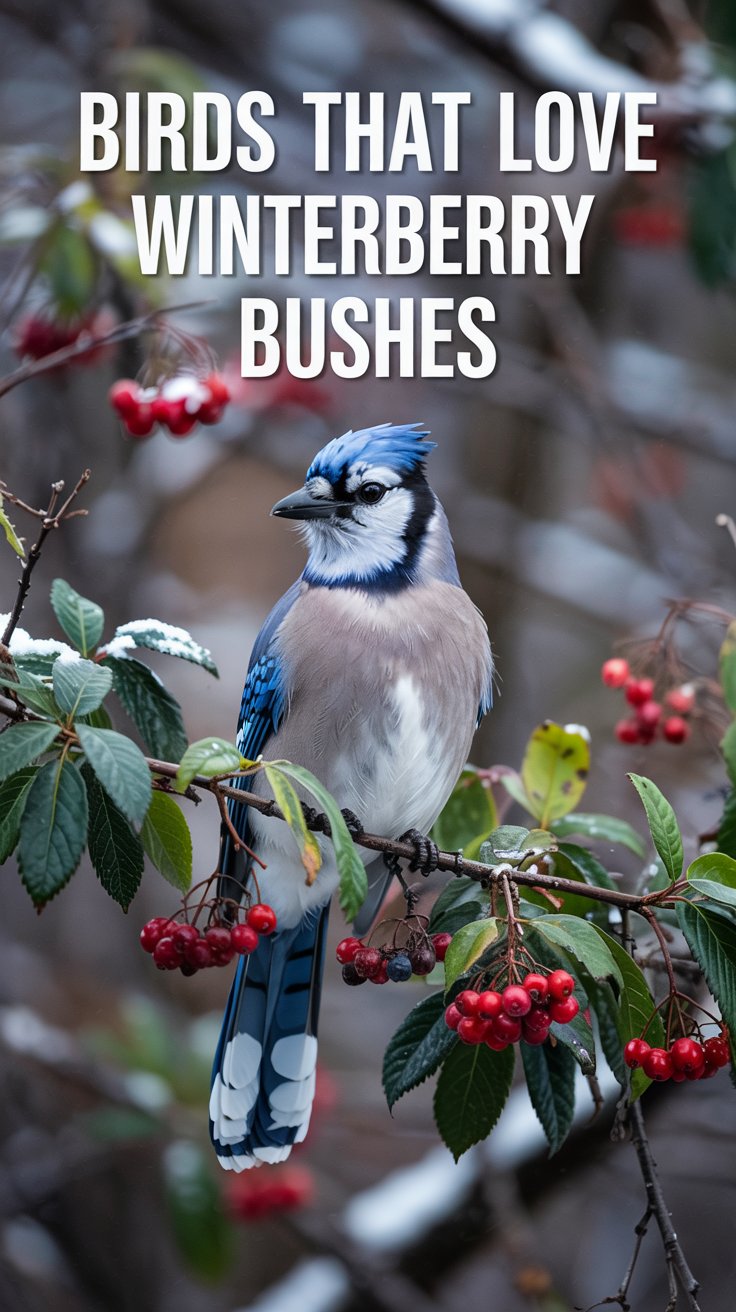
Understanding Bird Feeding Preferences
Different birds have different feeding styles when it comes to winterberry. Some birds like robins and cedar waxwings will eat the berries directly from branches. Others prefer berries that have fallen to the ground.
You can enhance your bird feeding area by planting winterberry near other food sources. Consider placing suet feeders or offering mealworms nearby to create a complete feeding station for songbirds.
Birds typically prefer berries that have been through a few frost cycles. This natural process makes the berries softer and sweeter.
Some species will visit your winterberry plants throughout winter, while others may stop by during migration.
If you want to attract the widest variety of birds, plant several winterberry bushes of different varieties. This extends the fruiting season and provides more food for your feathered visitors.

Growing Winterberry
Winterberry thrives in moist, acidic soils with a pH between 4.5 and 6.5.
You’ll have the best success planting it in spots with full sun to partial shade. While it prefers wet conditions, established plants can handle some drought.
This hardy shrub grows in USDA zones 3-9, making it suitable for most of the continental United States. In the wild, you’ll often find winterberry in wetlands, swamps, and along stream banks.
Fall is the best planting time, allowing roots to establish before winter. Space plants 5-6 feet apart to accommodate their mature spread. Add a layer of mulch to help retain moisture and suppress weeds.
Winterberry requires minimal pruning, but you can shape it in early spring before new growth appears.
Winterberry vs. Other Berries
Winterberry outperforms many other berry-producing shrubs for winter bird feeding. Unlike red chokeberry, whose fruits often disappear by December, winterberry berries persist well into late winter when food is scarce.
Birds typically eat winterberry after several freeze-thaw cycles have softened the berries. This timing provides critical nutrition during February and March when other food sources are depleted.
While American holly also produces red berries, its spiny leaves can make access difficult for smaller birds. Winterberry’s open branch structure allows easy access for various species, including robins, bluebirds, and cedar waxwings.
Winterberry berries contain less sugar than other fruits but offer essential fats that help birds maintain body heat during cold months. This makes them especially valuable during harsh winter conditions when birds need extra calories.
The Benefits of Winterberry in Your Garden
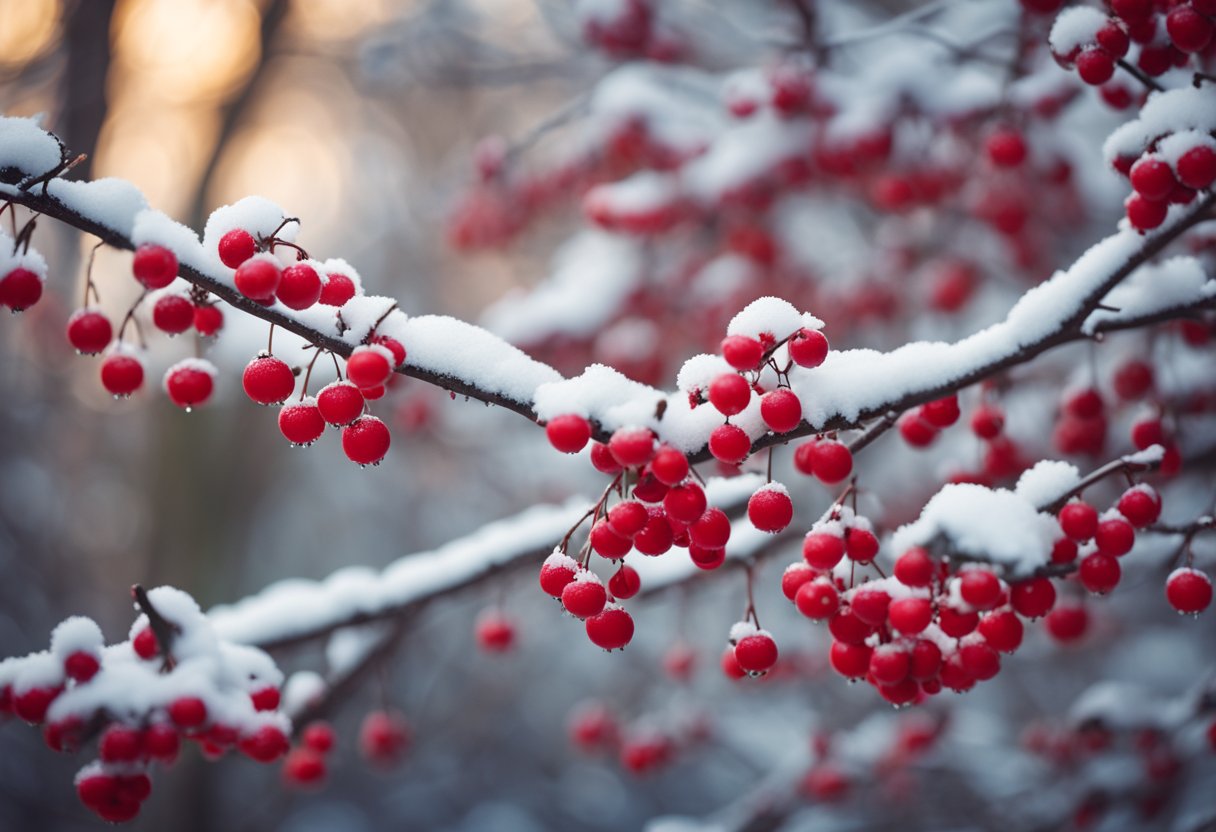
Aesthetic Appeal Through Seasons
Winterberry (Ilex verticillata) transforms with each season, giving your garden year-round interest. In spring and summer, the plant displays glossy green leaves that create a lush backdrop for other flowers.
Unlike other holly varieties, winterberry is deciduous, which means it drops its leaves in fall.
When winter arrives, the plant reveals its true beauty! Those famous bright red berries stand out dramatically against snow and provide striking color when most gardens look bare. The berries often persist until late winter, creating a cheerful spot of color during gray days.
For best visual impact, plant winterberries in groups rather than as single specimens. Consider pairing them with evergreen shrubs to create an eye-catching contrast in textures and colors. Your neighbors will admire these native plants through every season!
Companion Planting
Creating the right mix of plants around your winterberry holly enhances its beauty and increases its value to birds. The right companions can provide additional food, shelter, and nesting sites throughout the year.
Selecting Companion Flora
Native plants make excellent partners for winterberry holly. American beautyberry offers purple berries that ripen earlier than winterberry, extending the feeding season for birds.
Eastern red cedar provides year-round shelter and blue berries that many birds enjoy.
Northern bayberry works well with winterberry because it tolerates similar wet conditions and produces waxy berries that attract many of the same bird species.
Dogwood trees complement winterberry with their spring berries and attractive branching patterns.
Try adding Blazing Star and Purple Coneflower (Echinacea purpurea) to your garden. These flowers attract insects during summer, which brings insect-eating birds close to your winterberry before the berries ripen.
Designing a Bird-Friendly Landscape
When planning your garden, think in layers. Place taller plants like Arrowwood Viburnum and Eastern Red Cedar as a backdrop or windbreak. This protects smaller plants and creates safe perches for birds.
Plant winterberries in groups of three to five for the best visual impact and to ensure good berry production. Remember to include both male and female plants for pollination.
Create open areas near your berry-producing shrubs where birds can land and feel safe. Birds prefer to approach food sources from secure perches nearby.
Add a water feature if possible. Birds need water year-round, especially in winter when natural sources may freeze. This simple addition will make your garden even more attractive to the backyard birds we love!
